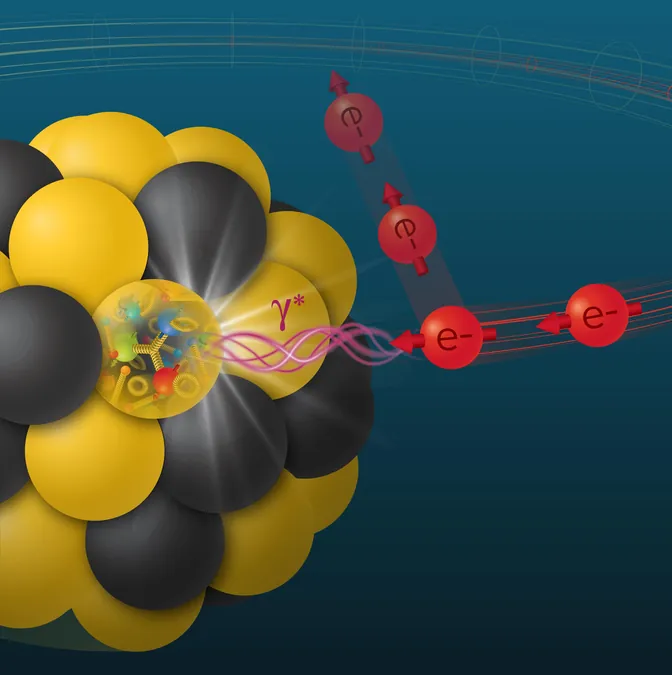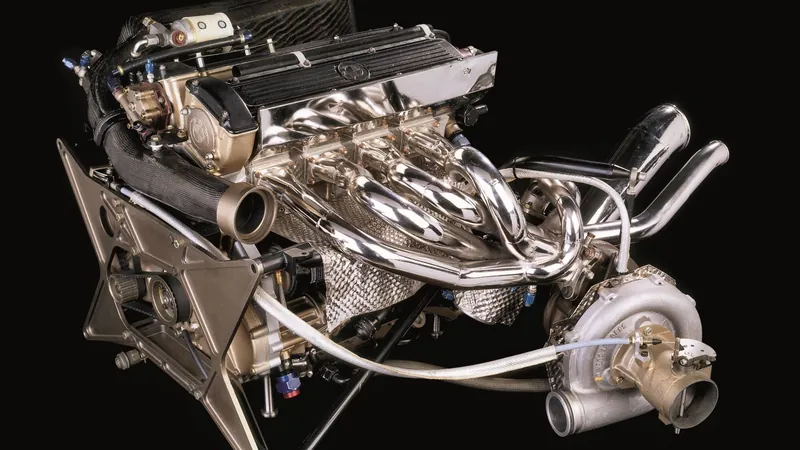
Groundbreaking Supercomputer Predictions Hold Keys to Understanding Mesons and Hadrons!
2024-11-06
Author: John Tan
Introduction
A team of nuclear physics theorists at the U.S. Department of Energy's Brookhaven National Laboratory is on the brink of a revolutionary advancement with major implications for particle physics. Their latest work demonstrates how sophisticated calculations performed on supercomputers can accurately predict the electric charge distribution in mesons—particles composed of a quark and an antiquark. But why should you care about mesons? Well, these particles, as well as the entire category they belong to—hadrons—are crucial for understanding the very fabric of our universe!
The Future of Particle Physics
With the future Electron-Ion Collider (EIC) under construction at Brookhaven Lab, scientists are eager to delve deeper into the enigmatic world of mesons and other hadrons. This cutting-edge facility aims to unveil how quarks and the gluons that bind them together create the mass and structure of almost all visible matter we see around us. According to theorist Swagato Mukherjee, who led the research, "The fundamental science goal of the EIC is to unravel how hadrons—including mesons, protons, and neutrons—derive their properties from their constituent quarks and gluons."
Significance of Pions and Hadrons
One of the lightest mesons, called the pion, plays an essential role in the strong force that binds protons and neutrons within atomic nuclei. The EIC's experiments promise to probe the nature of these pions, protons, and other hadrons, revealing how atoms hold together the way they do.
Publishing Findings
Recently published findings in *Physical Review Letters* align perfectly with results from low-energy experiments at Thomas Jefferson National Accelerator Facility, a partner in constructing the EIC. This concurrence is vital as scientists prepare for experiments slated to begin in the early 2030s, setting a robust benchmark for future comparisons.
Factorization Methodology
However, the significance of these predictions extends beyond merely establishing benchmarks for the EIC. The researchers have also employed these predictions, along with additional independent supercomputer simulations, to validate a widely used method for analyzing particle properties known as factorization. This technique simplifies complex physical processes into manageable components, setting the stage for more accurate predictions and analyses at the EIC.
Investigating Hadrons
So, how do scientists plan to investigate the inner dynamics of hadrons? The EIC will conduct high-energy collisions between electrons and protons or atomic nuclei, generating virtual photons—essentially light particles—that help reveal the detailed properties of the hadrons, akin to using a microscope to examine tiny building blocks of matter.
Applications of Factorization
By employing factorization, scientists can convert precise measurements from EIC collisions into high-resolution images of quarks and gluons within hadrons. Imagine a mathematical scenario where the experimental measurement (X) stems from intertwined components (Y and Z), both crucial for a better understanding of particle interactions.
Challenges and Solutions
Despite the complexities of calculating the interactions of quarks and gluons within hadrons—an intricate realm governed by quantum chromodynamics (QCD)—the researchers found a way. While calculating quark/gluon distributions presents a monumental challenge due to its multitude of variables, they cleverly leveraged simpler calculations for the weaker interactions.
Reverse Factorization
Brookhaven Lab's nuclear theory group members Qi Shi and Xiang Gao took this concept a step further by conducting reverse factorization. They used supercomputers and space-time lattice simulations to derive quark-antiquark distributions and applied fundamental calculations to verify their predictions regarding electric charge distribution in mesons.
Stunning Results
The results were stunning: their predictions through reverse factorization corroborated perfectly with supercomputer-based predictions, proving that this approach is both valid and essential for future work.
Conclusion
This breakthrough means that scientists can confidently utilize factorization to predict and analyze additional measurements at the EIC, even in cases where direct calculations may not be possible. In a nutshell, the team at Brookhaven is not just making predictions—they are laying down the very foundation for a new era of particle physics exploration! As the EIC gears up for its groundbreaking experiments in the coming years, the stakes have never been higher for comprehending the building blocks of our universe. Buckle up, because the world of hadrons is about to get a whole lot more exciting!




 Brasil (PT)
Brasil (PT)
 Canada (EN)
Canada (EN)
 Chile (ES)
Chile (ES)
 Česko (CS)
Česko (CS)
 대한민국 (KO)
대한민국 (KO)
 España (ES)
España (ES)
 France (FR)
France (FR)
 Hong Kong (EN)
Hong Kong (EN)
 Italia (IT)
Italia (IT)
 日本 (JA)
日本 (JA)
 Magyarország (HU)
Magyarország (HU)
 Norge (NO)
Norge (NO)
 Polska (PL)
Polska (PL)
 Schweiz (DE)
Schweiz (DE)
 Singapore (EN)
Singapore (EN)
 Sverige (SV)
Sverige (SV)
 Suomi (FI)
Suomi (FI)
 Türkiye (TR)
Türkiye (TR)
 الإمارات العربية المتحدة (AR)
الإمارات العربية المتحدة (AR)